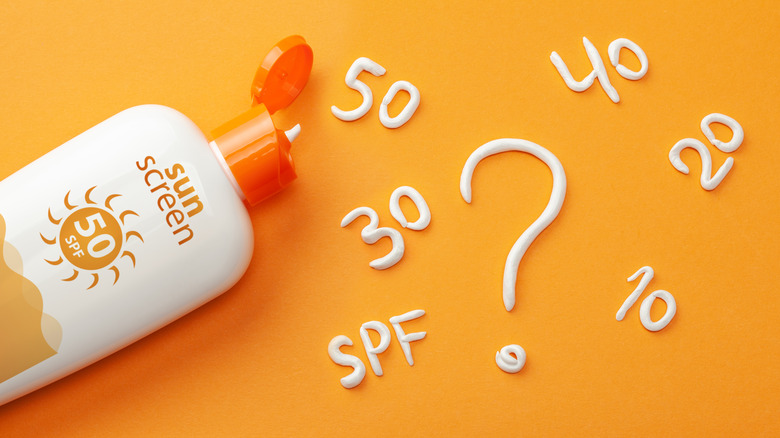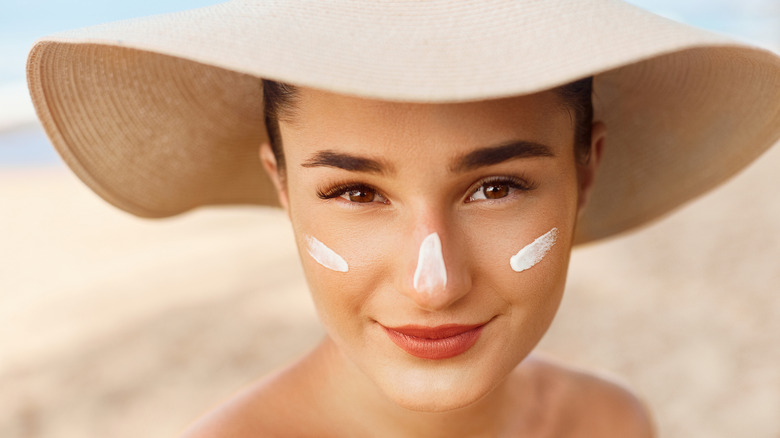Different Levels Of SPF Protection Explained
Even though many people don't start seriously thinking about sun protection until their 30s or beyond, it's never too early to protect your skin from damage that can be caused by too many UV rays. But with dozens of different brands of sunblock on the market, and many different SPF options, facing the sunscreen aisle at the store can be daunting.
Sun Protection Factor (aka SPF) is a measure of how much solar energy (in the form of skin-burning and cancer-causing UVB rays, as well as skin-tanning and aging UVA rays) is needed to actually produce a sunburn, when compared with unprotected skin (via Skin Cancer Foundation). So, using a sunblock with an SPF of 15 should mean that, with the sunblock, it would take 15 times more exposure to produce a sunburn as it would without any protection (via FDA).
That is not exactly a hard rule, though. There are several different factors that can impact both how much of an effect sun exposure will have on your skin, as well as how much protection sunblock will give you. Morning and evening sun, for example, is less intense than midday sun. Sun exposure at lower latitudes and on clear days is normally stronger than at higher latitudes or on cloudy days. So, a day at the beach in the Caribbean will mean something very different in terms of sun exposure than a day spent hiking in Alaska. And, if you're swimming or sweating much, that will affect how well your sunblock works, too.
An SPF of at least 30 offers good overall protection
That being said, dermatologists consider sunblock with an SPF of 30 to be perfectly adequate for most people, most of the time. David Colbert, a New York City board-certified dermatologist, says "The American Academy of Dermatology always recommends an SPF of 30, because it is clinically proven to be a sufficient amount of protection to reduce or minimize the adverse effects of sunlight" (via Allure). An SPF of 30 allows about 3% of UVB rays to hit your skin. SPF of 50 brings that number down to 2%, and SPF 100 gets it down even further, to 1% (via Skin Cancer Foundation).
Dermatologists are also quick to point out that the sunscreen only works if it is used according to the package directions — and that's where most of us fail. Joshua Zeichner, the director of cosmetic and clinical research in dermatology at Mount Sinai Hospital in New York City, adds "[I]n the real world, we do not apply as much sunscreen as we should, and we do not reapply." Applying about two tablespoons of sunscreen to the exposed parts of your face and body, and reapplying every two hours (or more often if swimming or sweating heavily) is necessary to have it actually provide the best protection possible.


